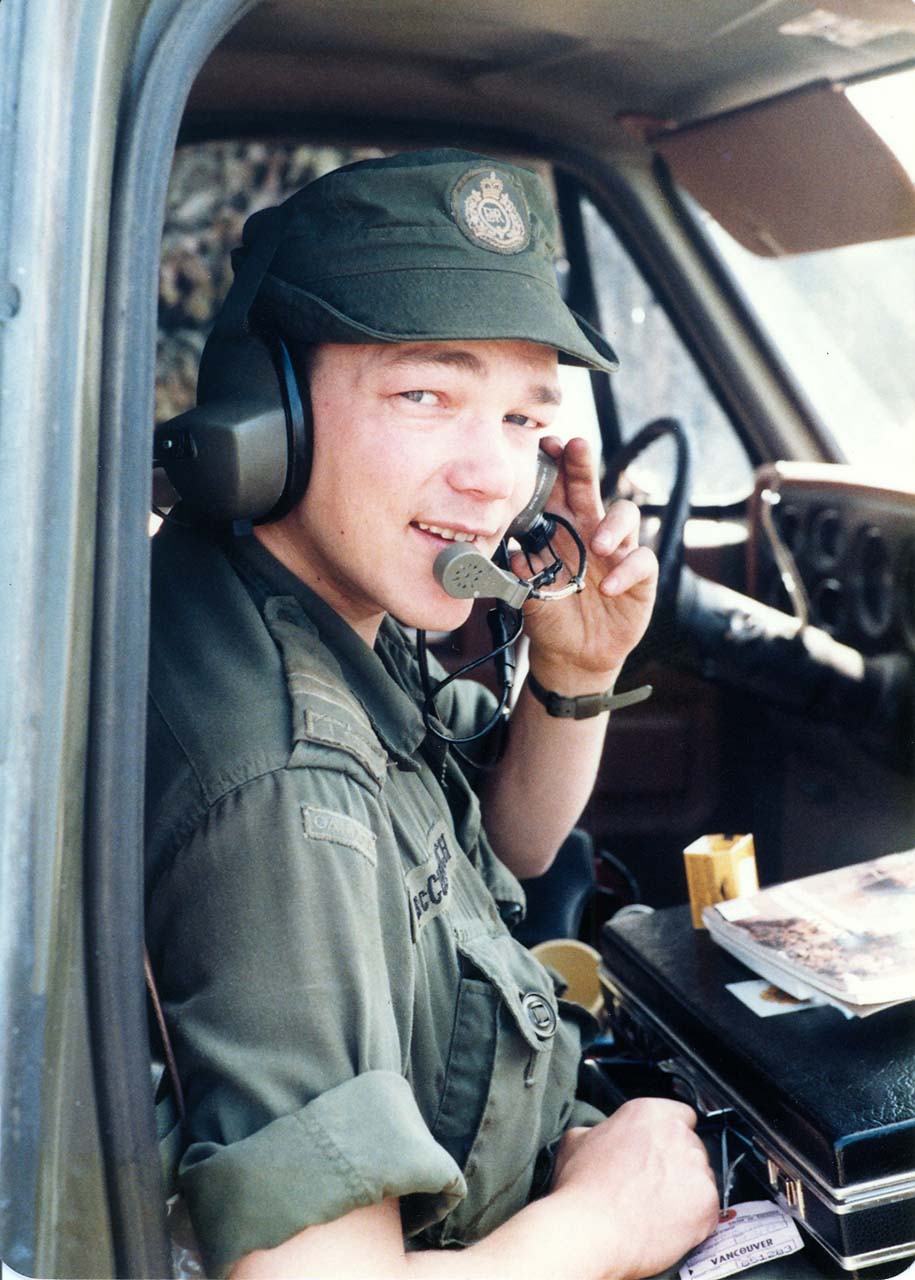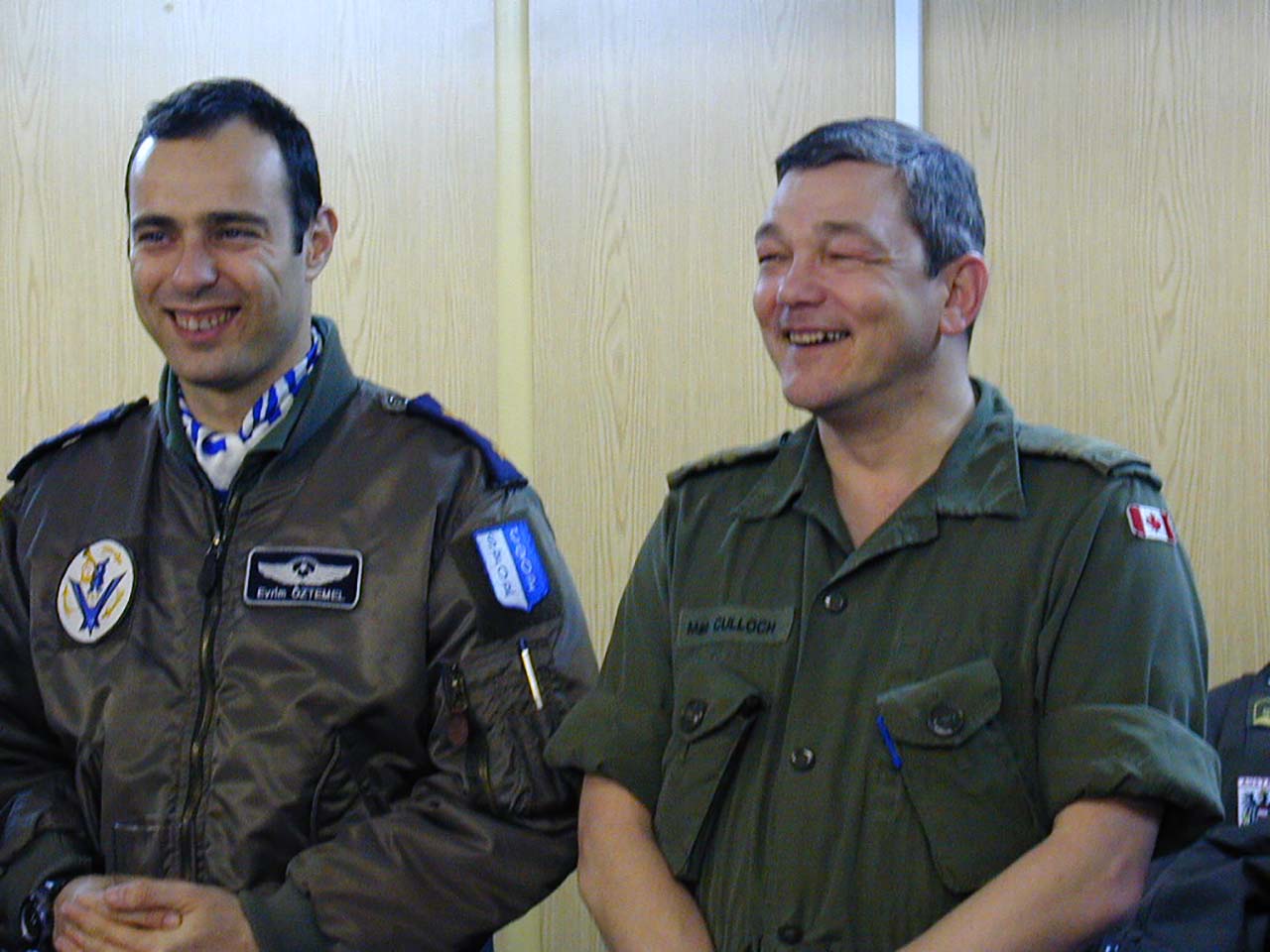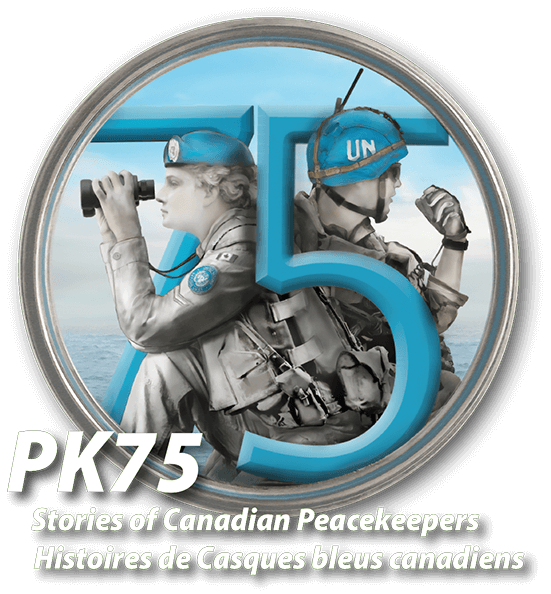

Sydney, NS, Canada
Wayne MacCulloch
Current Location: Orléans, ON, Canada
It was Monday, 13 January 1996 and the telephone in my office cubicle in National Defence Headquarters, Ottawa, was ringing. When I answered it, a voice asked, “Can you be in Haiti within two days?” And so began my second United Nations peacekeeping tour.
Usually, warning for such missions came months in advance, but this time the matter was urgent, as a replacement for the American officer currently in Haiti was overdue. The selected Canadian Military Engineers officer needed to be fluently bilingual, have construction experience, and preferably some prior involvement with United Nations peacekeeping missions. I met all the prerequisites and also had a reputation for speedily accomplishing challenging tasks.
I responded to my caller that it would take a few minutes to get my boss’ agreement, and I was asked to make it quick. The first call was to my wife, who readily agreed, and then I walked next door to my boss, Lieutenant-Colonel Al Johnson, whose first words were, “What did your wife say?” He, too, gave permission for me to go to Haiti, and I so informed the officer who had first called me.
The next challenge was compressing at least two weeks of preparation into 1½ days. Getting the necessary clothing and equipment was a snap, as was arranging air travel, but a medical issue posed a problem: the anti-malarial medication required at least two weeks to take effect. Thankfully, the medical staff accepted my promise to take every available precaution against being bitten by mosquitoes, and signed off my clearance to deploy to Haiti the next day.
The flight down was uneventful, but I was unprepared for the blast of heat that greeted me as soon as the aircraft cabin door was opened. The difference between mid-winter Ottawa and sultry Port-au-Prince was stunning; however, I collected my bags and was soon on my way to my new residence with my American guide.
After a whirlwind handover, the American officer was winging his way home, while I was discovering my duties as United Nations Power Liaison Officer to Électricité d’Haïti, the national electrical utility. These duties involved modernizing the power company and making it profitable, along with reducing its workforce from 4,000 people to 750. While my American predecessor noted that 750 was comparable to American practice, he had overlooked Haitian culture and tradition, so a more realistic figure was 1,500, with which Électricité d’Haïti readily agreed.
The next challenge was providing the utility with usable equipment. The United States donated 250 cargo trucks, but their maintenance manuals were only in English. Canadian manuals were bilingually printed side-by-side in English and French, and I managed to acquire a complete set from a friend in Ottawa. These five manuals were received like gold by the utility officials, since with them they could keep the donated trucks running.
Another interesting issue was the physical security of the power plants themselves. In Haiti, there was only one hydro-electric dam, and it was needed primarily for irrigation of croplands during the dry season. Electricity generation was a secondary use and it was connected only to the capital city of Port-au-Prince. Even there, giant marine diesels provided most of the power, but these were all located in the city slums, where street gangs frequently staged damaging attacks. The American solution was to reinforce the concrete walls surrounding the plants, heavily infest the wall tops with razor wire and place machine gun towers at the compound corners. These measures alienated the local population.
The Canadian answer was to hire the street gang leaders as security guards, pay them well and inform them that any attacks on or damage to the plant would result in their being fired. As a result, the street gang leaders were quickly transformed into respectable citizens of the community, with enough cash to look after their neighbourhoods. The gates to the power plants stood wide open, and residents cheerfully stopped by daily to get the news on repair work. Picking a solution suited to the Haitian way of life not only succeeded in the short term, but became a long-term habit.
There were many other interesting and amazing aspects to this tour, such as international negotiations for fuel and equipment, but those are tales for another time and, oh yeah, I never contracted malaria, either!
Biography
Major Wayne R. MacCulloch, CD (Retired), B.Eng., M.Sc., P.Eng. was a member of the Regular Force in the Canadian Military Engineers as a Military Engineering Officer from 5 January 1968 to 28 October 2008. He served in all provinces and territories of Canada and was deployed overseas six times: 1990-1991: Royal Military College of Science, Shrivenham, United Kingdom, with the British Army; 1994-1995: United Nations Bosnia-Hercegovina Command Operations Officer, United Nations Protection Force in the Former Yugoslavia, Sarajevo, Bosnia-Hercegovina; 1996: United Nations Power Liaison Officer, United Nations Mission in Haiti, Port-au-Prince, Haiti; 2000: Division Engineer, Multi-National Division South-West, Banja Luka, Bosnia-Hercegovina; 2001: Entity Armed Forces Restructuring Negotiator, Headquarters North Atlantic Treaty Organization Peace Stabilization Force, Butmir, Bosnia-Hercegovina; and 2002: Board of Inquiry Technical Specialist, Tritium Radiation Exposure Board of Inquiry, North Atlantic Treaty Organization Peace Stabilization Force, Velika Kladusa, Bosnia-Hercegovina.
As a military engineer he has constructed an airfield in Canada’s High Arctic; bridges in British Columbia, Québec, and Nova Scotia; numerous military installations across the country; and base realignments and closures in British Columbia, Alberta, Manitoba, Ontario, New Brunswick, Prince Edward Island, Nova Scotia, and Newfoundland and Labrador.
After attending school in Québec, he studied civil engineering at the Royal Military College of Canada in Kingston, ON, before being posted to the Canadian Forces School of Military Engineering in Chilliwack, BC, in 1976, as a French language engineering instructor. From there he was transferred to 5e Escadron du Génie de Campagne (later 5e Régiment du Génie de Combat) in Valcartier, QC, where he served as Troop Commander, Regimental Operations Officer and Squadron Commander. In 1979, he moved to Sydney, NS, as Regular Force Support to 45 Field Engineer Squadron, and two years later onwards to National Defence Headquarters. During this period, he also completed Canadian Forces Staff School in Toronto, ON.
In 1983, Wayne attended the Engineers Advanced Field Operations Course and Canadian Land Forces Command and Staff College before joining 1 Combat Engineer Regiment in Chilliwack, BC, as Regimental Operations Officer. His most remarkable task there was the completely successful planning and execution of a totally secret exercise PANDA BEAR — a first in the Canadian Forces in 11 years. Traversing the country to his next position in Halifax, NS, he was appointed Division Construction Engineering Officer, responsible for National Defence facilities spread across 20,000 square kilometres of the province. From there, it was a move to a staff job in Land Force Command Headquarters in St. Hubert, QC for 2½ years before his first overseas jaunt, to England.
Repatriation to Canada from the United Kingdom saw a return to National Defence Headquarters in Ottawa, performing duties in a number of staff positions, including planning the Canadian Army’s Year 2000 preparations and the transfer of the Second Battalion, Princess Patricia’s Canadian Light Infantry from Winnipeg to Shilo, MB. It was also during this time frame that he served on his five peace support operations.
Turned down for a sixth mission, to Afghanistan this time, in 2003, he was offered command of 45 Field Squadron in Sydney, NS, as a consolation prize. Leaping at the opportunity to return to the home of his heart, he led Squadron cleanup efforts in Halifax after Hurricane Juan in September 2003 and the construction of 11 bridges for the Trans Canada Trail before handing over command to his successor and returning to further staff jobs in Ottawa, where he retired from the Canadian Armed Forces on 24 October 2008.
Wayne has not been idle in retirement, dedicating his time and efforts to furthering Veterans’ issues. He is the Past National President of the Canadian Association of Veterans in United Nations Peacekeeping and its current Central Region Director, as well as the Curator of “Reconciliation”, Canada’s National Peacekeeping Monument in Ottawa. No stranger to writing, he has authored the following projects: “Y2K the Army Way” for the Emergency Preparedness Magazine in August 1999; Chapter 18 of John Gardam’s “Canadians in War and Peace”, 1999; and the substantiation for re-designation of Nova Scotia Highway 125 on Cape Breton Island to “Peacekeepers Way” in 2008. He further assisted in the authoring of Volume 4 of the Official History of the Canadian Military Engineers, 1973–2003.




